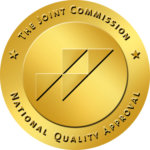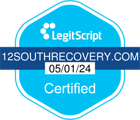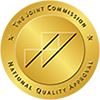Have you ever swallowed your words, hidden your true feelings, or dimmed your light to make others comfortable? For millions of young women, this pattern of self-silencing isn’t just an occasional social strategy—it’s a deeply ingrained behavior that profoundly impacts their mental health and well-being.
In today’s society, young women are pressured to be agreeable, avoid conflict, and prioritize others’ needs above their own. This expectation to maintain harmony by suppressing their authentic thoughts and emotions creates a dangerous pattern known as self-silencing. The statistics are alarming: studies show that young women who regularly engage in self-silencing behaviors are three times more likely to experience depression and twice as likely to develop anxiety disorders compared to those who express themselves freely.
Imagine a life where your authentic voice becomes so buried that you lose connection with your true self, leading to a profound sense of emptiness and psychological distress. This disconnection doesn’t just affect mental health—it creates vulnerability to unhealthy coping mechanisms, including substance use, which can spiral into addiction. The good news is that recognizing this pattern is the first step toward recovery, and professional support can help young women reclaim their voices and rebuild their mental health.
What Is Self-Silencing? Recognizing the Pattern
Self-silencing describes a pattern where individuals—particularly young women—consistently suppress their thoughts, opinions, and emotional needs to maintain relationships and avoid conflict. Rather than expressing authentic feelings, they present a carefully curated external self that meets others’ expectations.
The Psychology Behind Self-Silencing Behaviors
At its core, self-silencing stems from the belief that maintaining harmony and connection requires hiding one’s true self. This behavior typically develops through:
Early Socialization: From a young age, many girls receive messages that being “good” means being agreeable, accommodating, and putting others first. These subtle and overt societal cues teach young women that their worth depends on how well they meet others’ needs rather than expressing themselves.
Relational Values: Young women often learn that preserving relationships should take precedence over self-expression. The fear of rejection or abandonment becomes a powerful motivator to conceal authentic feelings and opinions.
Avoidance of Conflict: Many who self-silence have observed or experienced destructive conflict, believing disagreement inevitably leads to relationship damage or loss.
Cultural and Familial Expectations: In many cultural and family contexts, young women receive explicit messages about appropriate behavior, prioritizing emotional restraint and self-sacrifice.
Dr. Dana Jack, who pioneered research on self-silencing, describes it as “the process of withholding expressions of feelings or actions that might create conflict or tension in close relationships.” This silencing creates a profound disconnection between a person’s inner experience and outward expression—a division that creates significant psychological strain.
Common Signs of Self-Silencing in Young Women
Self-silencing manifests in numerous subtle and obvious ways:
- Emotional Suppression: Hiding negative emotions (anger, disappointment, frustration) while displaying positive ones (happiness, agreeableness) regardless of true feelings.
- Excessive Accommodation: Consistently prioritize others’ preferences, needs, and opinions while dismissing or devaluing oneself.
- External Validation Seeking: Defining self-worth primarily through others’ approval and validation rather than internal standards.
- Relationship Preservation at All Costs: Making significant personal sacrifices to maintain relationships, even when those relationships are unhealthy or harmful.
- Perfectionism: Striving for flawless performance and appearance to avoid criticism or judgment.
- False Agreement: Outwardly agreeing with others while internally holding different opinions or beliefs.
- Difficulty Identifying Personal Needs: Becoming so disconnected from oneself that identifying authentic desires, preferences, and needs becomes challenging.
One young woman in recovery at 12 South Recovery described her experience: “I became so good at being who everyone wanted me to be that I lost track of who I actually was. By the time I reached my twenties, I didn’t know what I wanted, believed, or enjoyed. The only relief I found was through substance use, which temporarily numbed the emptiness I felt.”
The Mental Health Impact: How Self-Silencing Affects Young Women
The psychological consequences of chronic self-silencing are far-reaching and potentially devastating, creating vulnerability to multiple mental health conditions.
Depression and Anxiety: The Silent Aftermath
Research consistently shows a strong correlation between self-silencing behaviors and the development of depression and anxiety disorders in young women. When individuals regularly suppress their authentic experiences:
- Depression Develops: The chronic disconnection from one’s true self creates feelings of emptiness, worthlessness, and hopelessness—hallmark symptoms of depression. Studies show that women who regularly self-silence have significantly higher rates of clinical depression than those who express themselves authentically.
- Anxiety Intensifies: The constant vigilance required to monitor and adjust one’s presentation creates overwhelming anxiety. Young women who self-silence often report persistent worry about how others perceive them and fear of making mistakes that might reveal their authentic selves.
- Somatic Symptoms Emerge: Unexpressed emotions often manifest physically as headaches, digestive issues, chronic pain, and fatigue—creating additional health challenges that further impact the quality of life.
Self-Silencing and Substance Use: The Dangerous Connection
For many young women, the psychological distress caused by self-silencing creates vulnerability to substance use as a coping mechanism. This relationship develops through several pathways:
- Emotional Regulation: Substances temporarily relieve the emotional pain, anxiety, and emptiness resulting from chronic self-disconnection.
- Authentic Expression: Some young women report using substances to access feelings of authenticity and freedom from the constraints of their carefully constructed public personas.
- Social Connection: Substance use may facilitate a sense of belonging and acceptance that feels unattainable when maintaining a false self.
- Temporary Relief: Alcohol, prescription medications, or illicit drugs can provide a momentary escape from the exhaustion of constant self-monitoring and people-pleasing.
At 12 South Recovery, clinicians frequently observe the connection between self-silencing patterns and substance use disorders in young women seeking treatment. As one therapist notes, “We often see young women who’ve spent years silencing their needs and emotions turn to substances as a way to cope with the resulting depression and anxiety. What begins as self-medication frequently develops into dependency or addiction.”
The Impact on Identity Development and Self-Worth
Perhaps most significantly, chronic self-silencing disrupts healthy identity formation during crucial developmental periods:
- Identity Confusion: Young women who habitually silence themselves often struggle to develop a coherent sense of identity, as they’ve become disconnected from their authentic values, preferences, and beliefs.
- Diminished Self-Worth: Consistently prioritizing others’ needs and opinions above one’s own reinforces the belief that one’s authentic self is inadequate or unworthy of expression.
- Relationship Difficulties: The pattern creates challenges in forming healthy relationships based on mutual respect and authenticity as young women lose confidence in their right to express needs and boundaries.
- Lost Potential: Chronic self-silencing often leads to limited exploration of interests and abilities, potentially preventing young women from pursuing fulfilling educational, career, and personal paths.
Breaking the Silence: Recovery Approaches and Therapeutic Interventions
Healing from self-silencing patterns requires comprehensive therapeutic approaches that address both the behavioral patterns and any co-occurring mental health conditions or substance use disorders.
Therapeutic Approaches That Foster Authentic Expression
Several evidence-based therapeutic modalities effectively address self-silencing behaviors:
- Cognitive Behavioral Therapy (CBT): CBT helps identify and challenge the beliefs underlying self-silencing, such as “expressing my needs will lead to rejection” or “my value comes from pleasing others.” By examining these thoughts critically and testing new behaviors, young women can develop healthier patterns of self-expression.
- Dialectical Behavior Therapy (DBT): DBT provides concrete skills for emotional regulation, interpersonal effectiveness, and distress tolerance—tools that support authentic expression while navigating relationships effectively.
- Eye Movement Desensitization and Reprocessing (EMDR): For young women whose self-silencing stems from traumatic experiences, EMDR helps process and integrate these experiences, reducing their power to drive current behavior.
- Group Therapy: Structured group work creates a safe environment to practice authentic expression and receive supportive feedback, helping young women recognize they’re not alone in their struggles.
- Family Therapy: When family dynamics have reinforced self-silencing, family therapy helps establish healthier communication patterns and supports young women’s emerging authentic voices within their family systems.
At 12 South Recovery, these therapeutic approaches are tailored to each client’s needs and experiences, creating individualized treatment plans that address both self-silencing patterns and co-occurring conditions.
Integrated Treatment for Co-Occurring Disorders
When self-silencing has contributed to substance use disorders or other mental health conditions, integrated treatment provides comprehensive care:
- Dual Diagnosis Treatment: Addressing both substance use and mental health simultaneously ensures that the root causes of both issues receive attention rather than treating symptoms in isolation.
- Trauma-Informed Care: Recognizing that self-silencing often relates to traumatic experiences, trauma-informed approaches create safety and empowerment throughout the recovery process.
- Holistic Therapies: Complementary approaches like mindfulness, yoga, art therapy, and somatic experiencing help reconnect young women with their bodies and emotions, rebuilding the mind-body connection often disrupted by chronic self-silencing.
- Medication Management: When appropriate, psychiatric medications may help manage symptoms of depression, anxiety, or other conditions while therapeutic work addresses underlying patterns.
Building Recovery Support Systems
Sustainable recovery from self-silencing patterns requires ongoing support and practice:
- Continuing Care Programs: After intensive treatment, continuing care provides structured support while young women implement new patterns of authentic expression in daily life.
- Peer Support Groups: Connection with others who understand the challenges of recovery creates community and reduces isolation.
- Mentorship Relationships: Relationships with women who model healthy self-expression provide inspiration and practical guidance.
- Alumni Programs: Ongoing connection with treatment communities helps maintain momentum in recovery and provides support during challenging periods.
One 12 South Recovery alumna shared, “Learning to speak my truth after years of silence was terrifying at first. Having supportive therapists and peers who validated my voice made all the difference. Now, three years into recovery, I can’t imagine returning to that muted version of myself.”
Practical Steps: Cultivating Your Authentic Voice
Recovery from self-silencing isn’t just about therapy—it includes daily practices that strengthen authentic self-expression:
Self-Awareness Practices
Rebuilding connection with your authentic self begins with awareness:
- Journaling: Regular writing helps identify genuine thoughts and feelings that may have been suppressed.
- Mindfulness Meditation: Mindfulness practices develop the capacity to observe thoughts and emotions without judgment, creating space between experiences and reactions.
- Body Awareness: Physical practices like yoga, tai chi, or simple body scans help reconnect with physical sensations that provide crucial emotional information.
- Values Clarification: Structured exercises to identify personal values separate from others’ expectations create a foundation for authentic choices.
Communication Skills for Authentic Expression
Developing concrete skills supports the courage to express yourself honestly:
- Assertiveness Training: Learning to express needs and opinions directly and respectfully provides alternatives to silence or aggression.
- Boundary Setting: Identifying and communicating personal boundaries protects well-being while maintaining relationships.
- Emotion Vocabulary: Expanding language for emotional experiences enables more precise and effective expression.
- Conflict Navigation: Developing skills to engage in healthy conflict counters the fear that disagreement inevitably damages relationships.
Building a Supportive Environment
Creating contexts that support authenticity facilitates lasting change:
- Relationship Inventory: Assessing which relationships support authentic expression and which reinforce self-silencing helps prioritize healthy connections.
- Community Engagement: Finding communities that value diverse voices and authentic expression provides social reinforcement for new behaviors.
- Ongoing Professional Support: Working with therapists or coaches specializing in women’s empowerment and authentic living guides through challenges.
- Media Consumption: Being intentional about media influences by seeking content that portrays women expressing themselves authentically rather than conforming to limiting stereotypes.
Call 12 South Recovery Today!
Breaking free from self-silencing patterns requires courage, support, and commitment—but the rewards of authentic living are immeasurable. By reclaiming your voice, you transform your life and potentially inspire others to do the same.
At 12 South Recovery, we understand the complex relationship between self-silencing, mental health challenges, and substance use disorders. Our comprehensive treatment programs address these interconnected issues through evidence-based therapies, supportive community, and individualized care plans that honor each young woman’s unique journey.
Suppose you or someone you love is struggling with the consequences of self-silencing—whether manifesting as depression, anxiety, substance use, or a general sense of disconnection from self—know that practical help is available. Our compassionate team specializes in creating safe spaces where authentic expression is allowed and celebrated as an essential healing component.
Taking the first step can be as simple as reaching out for a confidential consultation where your experiences will be heard without judgment. Contact our admissions team today at [phone number] to learn more about our programs and how we can support your journey toward authentic living and improved mental health.
If you found this article helpful, please share it with others who might benefit from understanding self-silencing and its impacts. By spreading awareness, we can help more young women recognize these patterns and find their way to recovery and authentic self-expression.
FAQs
Signs of self-silencing include consistently prioritizing others’ needs over your own, difficulty identifying and expressing your true feelings, fear of conflict that leads to agreement against your better judgment, feeling exhausted by maintaining relationships, seeking constant validation from others, and experiencing a disconnection between your public persona and private feelings. If these patterns sound familiar, you may be engaging in self-silencing. At 12 South Recovery, our assessment process helps identify these patterns and their impact on your mental health and well-being.
Yes, many young women turn to substances to cope with the emotional distress, anxiety, and depression that result from chronic self-silencing. Alcohol, prescription medications, or other substances may temporarily relieve the pain of disconnection or provide a sense of authenticity that feels unattainable otherwise. This self-medication can develop into dependency or addiction over time. Our dual diagnosis treatment program addresses both the substance use and the underlying patterns that contribute to it, creating a foundation for comprehensive recovery.
Yes, therapy can be highly effective in addressing self-silencing by providing a safe space for individuals to express themselves authentically and develop healthy coping mechanisms.
Family therapy helps address self-silencing by examining the family dynamics that may have reinforced these patterns. The therapeutic process creates a safe environment to practice new communication patterns, allows family members to understand how their interactions might contribute to self-silencing, and supports the development of relationships that value authentic expression. At 12 South Recovery, our family program includes education about self-silencing and practical strategies to support healthy communication and boundaries within the family system.
The first step in recovery is awareness—recognizing the pattern and its impact on your life. This awareness often develops gradually, sometimes prompted by increasing emotional distress, relationship difficulties, or substance use concerns. Once you recognize the pattern, reaching out for professional support is crucial. A comprehensive assessment by mental health professionals experienced in addressing these issues can determine the best treatment approach. At 12 South Recovery, we provide confidential consultations to help young women understand their experiences and explore treatment options in a supportive, non-judgmental environment.






































